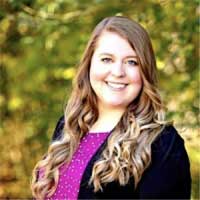Challenges in School Counseling: Social-Emotional Learning (SEL)
Counseling Schools Search
When you click on a sponsoring school or program advertised on our site, or fill out a form to request information from a sponsoring school, we may earn a commission. View our advertising disclosure for more details.
“We know that when school counselors are allowed to run a comprehensive program that includes social-emotional learning, there are measurable benefits for students.”
Olivia Carter, School Counselor of the Year, American School Counselor Association (ASCA)
Broadly speaking, social-emotional learning (SEL) is the process of developing a learner’s social and emotional skills with the same level of focus as shown to other core subjects like reading, math, and science. More specific definitions will vary, as SEL can take several different forms: it can be applied to children and adults; it can reprioritize how one learns instead of what one learns; and it can extend across schools, homes, and communities.
A significant body of research has demonstrated the effectiveness of SEL in supporting students’ academic and long-term success. Today, 27 states have adopted K-12 SEL competencies, and every state has adopted pre-K SEL competencies. In the last year, however, SEL has faced headwinds from a small but vocal group of critics who associate it with critical race theory (CRT). Much of that criticism ignores what SEL actually is—and school counselors are fighting to set the record straight.
Read on to learn more about the past, present, and future of social-emotional learning.
Meet the Expert: Olivia Carter, MA

Olivia Carter is a school counselor at Jefferson Elementary School in Cape Girardeau, Missouri. She was named the 2021 School Counselor of the Year by the American School Counselor Association (ASCA) for her ability to create lasting change within the profession through leadership, collaboration, and advocacy.
As a member of her school’s leadership team, Carter used behavior data to encourage implementing a more trauma-informed approach. She taught teachers about trauma and trauma responses, sparking interest among staff members for further training in anti-biased and antiracist teaching, restorative practices, and self-regulation. She also created Trauma-Informed Tuesdays, a newsletter focused on teacher wellness and best practices related to building resilience.
Carter received her master’s degree in school counseling and her bachelor’s degree in psychology from Southeast Missouri State University. She is a member of ASCA, the Missouri School Counselor Association, the Missouri State Teachers Association, and is a member and president-elect of the Southeast Missouri School Counselor Association.
The Evolution of Social-Emotional Learning (SEL)
“Social-Emotional Learning (SEL) has become much more mainstream in the last few years,” Carter says. “While school counselors have been working with students in the classroom on these skills since I started as a school counselor ten years ago, we’ve certainly seen an increase in teachers who are implementing these skills and practices in their classrooms in the last five.”
The origins of social-emotional learning (SEL) date back to 1968, when Dr. James Comer and his colleagues at Yale University’s Child Study Center implemented their program based on supporting “the whole child” in two Connecticut schools.
Over the following two decades, they saw a significant decline in behavioral challenges and earned an academic performance above the national average. Interest and support in the idea eventually coalesced into the term social-emotional learning (SEL) in 1994. Its evolution has been rapid, and constant, ever since.
“In the past, we did SEL as a stand-alone lesson that was connected to our school counseling standards,” Carter says. “We would read a book about a topic (respect, empathy, responsibility, etc.), have some discussion questions, and complete an activity. Now there are many companies that cater to SEL that include virtual lessons, scripted lesson plans, mini-lessons on different online programming, and we see it embedded in English Language Arts (ELA) concepts and many project-based learning strategies.”
The Benefits of Social-Emotional Learning (SEL)
According to the Collaborative for Academic, Social, and Emotional Learning (CASEL), the main components of SEL are self-awareness, self-management, social awareness, relationship skills, and responsible decision-making. Those components contribute to a safer and more serene student, positively impacting mental health and academic performance. They’re far from foreign concepts, either: in the corporate world, they’re referred to as soft skills.
“I think if you ask any employer what they are looking for in future employees, they are looking for skills around social-emotional learning,” Carter says. “Colleges, technical schools, and employers are looking for individuals who know how to work collaboratively, who are responsible, and who know how to empathize. Job-specific skills can be taught, but these are values that we need to walk into spaces with.”
One of the reasons for SEL’s rapid adoption is the body of evidence supporting its positive effects. In 2011, research across over 200 SEL programs showed improved student behavior and academic achievement. One 2015 study found SEL programs yield $11 for every $1 spent on them; another study found that more socially competent kindergarteners are more likely to graduate from high school on time, complete a college degree, and get a stable job in early adulthood.
“We know that when school counselors are allowed to run a comprehensive program that includes social-emotional learning, there are measurable benefits for students,” Carter says.
The Future of Social-Emotional Learning (SEL)
In 2019, a form of SEL known as transformative social-emotional learning (TSEL) was developed to teach students how to critically examine the root causes of inequality and promote collaborative solutions. With a renewed focus on identity, agency, and social change, TSEL used some of the same vocabulary used by proponents (and antagonists) of critical race theory (CRT). Despite the two being categorically different concepts, disputes over SEL, and accusations of its connections to CRT, have arisen in 25 states in the last two years.
“We have a very clear role in the school, and while this includes looking at and reducing disparities in discipline, attendance, and academics for historically marginalized groups, we’re not teaching critical race theory,” Carter says. “The politicization of our role and SEL will only harm students by reducing the number of school counselors or the role of counselors in schools.”
The consequences are serious. Florida’s Department of Education issued specifications that prohibit the inclusion of SEL in its social studies curriculum, specifically prohibiting any texts that refer to managing emotions, developing relationships, or the concept of identity.
This comes at a time when the data shows children in America are experiencing a mental health crisis. Skills around managing emotion and navigating identity are not the problem; they’re part of the solution.
The debate around SEL sometimes equates to one of emotions versus data. Carter believes the data will win in the end, especially when combined with advocacy. School counselors can use data to advocate for more time in classrooms, for funding for evidence-based curricula, and to help protect the school counselor’s role. And data helps counselors share what they do and how they help students, dispelling myths around SEL.
“SEL will continue to grow,” Carter says. “Student mental health continues to be a concern, and giving students the tools they need through social-emotional learning will be essential. I believe that we’ll continue to find ways to make it relevant and authentic.”

